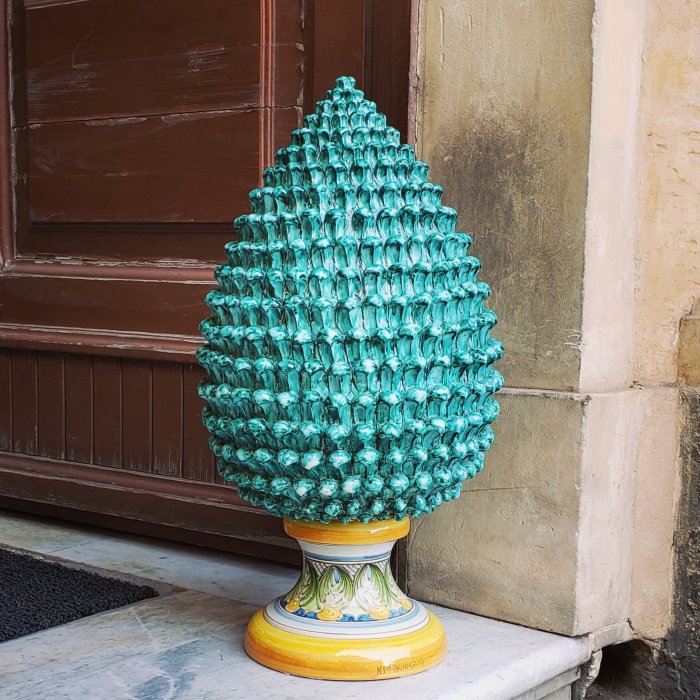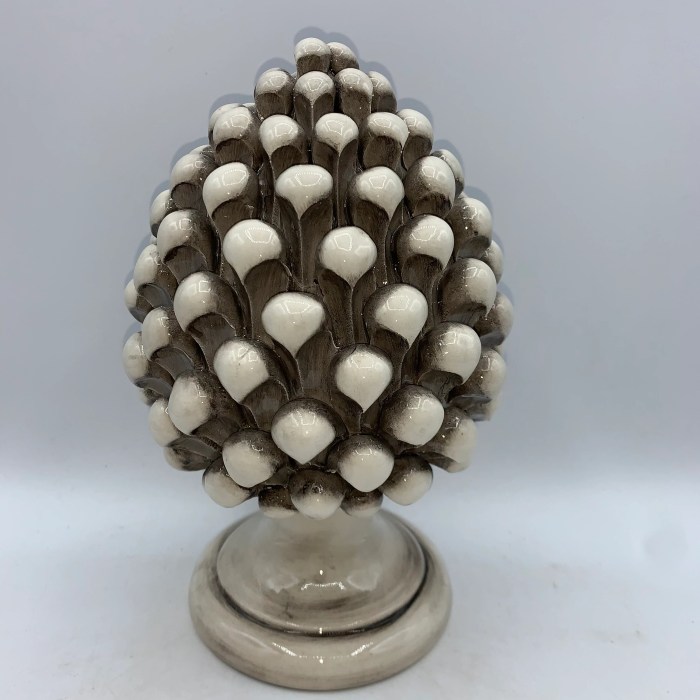Symbols of sicily pine cone – The pine cone, an emblem deeply embedded in Sicilian culture, stands as a testament to the island’s rich history, symbolism, and enduring spirit.
From ancient mythology to modern art, the pine cone has permeated every facet of Sicilian life, leaving an indelible mark on its architecture, art, and religious beliefs.
History and Significance
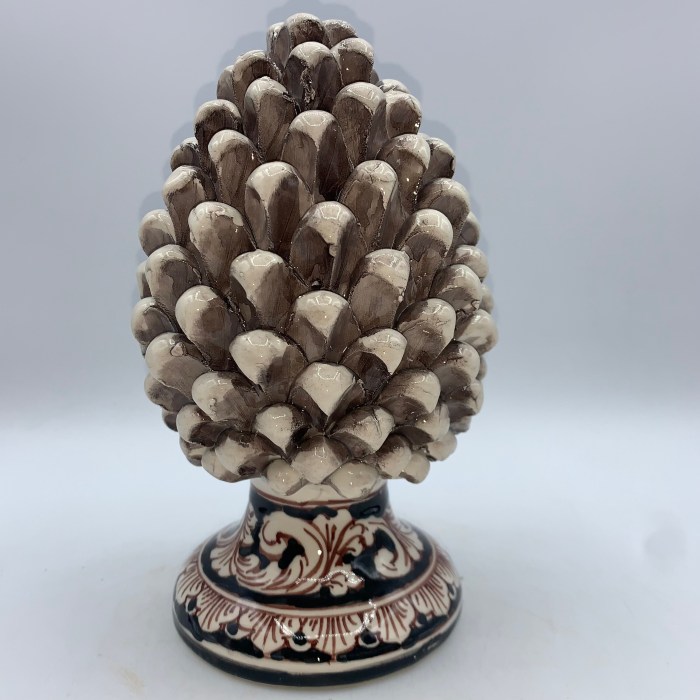
The pine cone holds a deep historical and cultural significance in Sicily. It has been a revered symbol for centuries, representing fertility, prosperity, and longevity.In ancient Greek mythology, the pine cone was associated with the goddess Demeter, who was worshipped as the protector of the harvest.
The Greeks believed that the pine cone symbolized the abundance of the earth and the hope for a bountiful harvest. This symbolism carried over into Roman culture, where the pine cone was seen as a symbol of good luck and prosperity.
Religious Significance
In Christianity, the pine cone has been adopted as a symbol of the Holy Spirit. The shape of the pine cone, with its many scales, is said to represent the tongues of fire that descended upon the apostles at Pentecost.
This symbolism is often found in religious artwork, where the pine cone is depicted as a crown or halo around the head of the Holy Spirit.
Architectural Significance, Symbols of sicily pine cone
The pine cone has also played an important role in Sicilian architecture. It is often found as a decorative element on buildings, particularly on churches and palaces. The pine cone’s association with fertility and prosperity made it a popular choice for adorning buildings that were intended to be symbols of wealth and power.
Modern Significance
Today, the pine cone remains an important symbol in Sicilian culture. It is used in a variety of contexts, from traditional crafts to modern art. The pine cone is also a popular tourist souvenir, representing the island’s rich history and culture.
The symbolic Sicilian pine cone, an emblem of strength and fertility, has been revered for centuries. But when it comes to deciding between two talented players like Chris Olave or Joe Mixon, the choice becomes equally intriguing . Yet, like the pine cone’s enduring significance, the legacy of these athletes will continue to inspire, reminding us of the resilience and determination that shape both art and sport.
Symbolism in Art and Architecture

The pine cone, as a potent symbol of Sicily, has found its way into the artistic and architectural landscape of the region, leaving an enduring legacy in the form of decorative motifs.
In architecture, the pine cone has been used as an ornamental element on buildings, both sacred and secular. Sculptures of pine cones can be found atop domes, facades, and balustrades, adding a touch of Sicilian identity to the structures.
Sculptures
Pine cone sculptures have been a popular form of artistic expression in Sicily. These sculptures range from small, intricate pieces to monumental works of art.
- The Pine Cone Fountainin Rome, a monumental bronze sculpture, is a striking example of the use of the pine cone as a decorative motif.
- The Pine Cone Statuein Palermo, carved from a single block of marble, is another notable example of Sicilian pine cone sculpture.
Paintings
The pine cone has also made its mark in Sicilian painting. Artists have incorporated it into their works to evoke the symbolism and beauty of the island.
- The painting “Sicilian Landscape with Pine Trees”by Antonello da Messina depicts a serene Sicilian countryside, with pine cones prominently featured in the foreground.
- In “The Annunciation”by Francesco Laurana, the Archangel Gabriel is depicted holding a staff topped with a pine cone, symbolizing the promise of eternal life.
Buildings
The pine cone has been incorporated into the design of many Sicilian buildings, both historic and modern.
- The Norman Palacein Palermo features a courtyard with a fountain adorned with pine cones.
- The Church of San Cataldoin Palermo has a dome topped with a large pine cone, a symbol of the city’s prosperity.
Through its presence in art and architecture, the pine cone has become an iconic symbol of Sicily, embodying the island’s rich history, culture, and natural beauty.
Religious and Mythological Connections
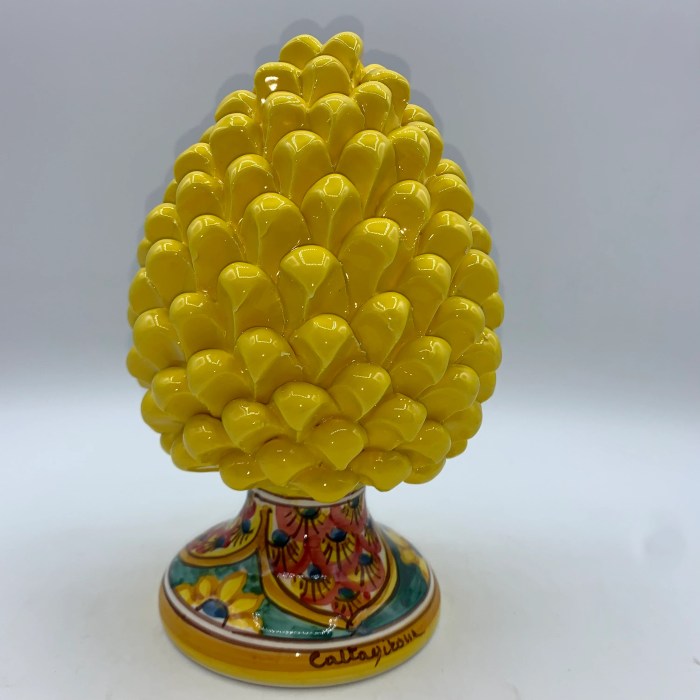
The pine cone holds significant religious and mythological associations in Sicily, deeply entwined with the beliefs and traditions of the ancient Greeks and Romans. These connections have profoundly influenced Sicilian culture and continue to resonate in various aspects of the island’s artistic and architectural heritage.
Greek Mythology
In Greek mythology, the pine cone was closely associated with the god Dionysus, the patron of wine, revelry, and fertility. Dionysus was often depicted carrying a thyrsus, a staff adorned with pine cones and ivy leaves, symbolizing his divine power and connection to nature.
The pine cone also played a role in the cult of Demeter, the goddess of agriculture and harvest. Demeter’s sacred tree was the pine, and its cones were believed to hold her blessings for a bountiful harvest and prosperity.
Roman Mythology
The Romans adopted many of the Greek mythological associations with the pine cone. In Roman mythology, the pine cone was sacred to the god Bacchus, the Roman equivalent of Dionysus. Bacchus was worshipped as the god of wine and festivities, and the pine cone symbolized his divine intoxication and revelry.
The pine cone was also associated with the Roman goddess Cybele, the mother goddess of nature. Cybele was often depicted with a crown adorned with pine cones, representing her connection to the earth and fertility.
Modern Interpretations: Symbols Of Sicily Pine Cone
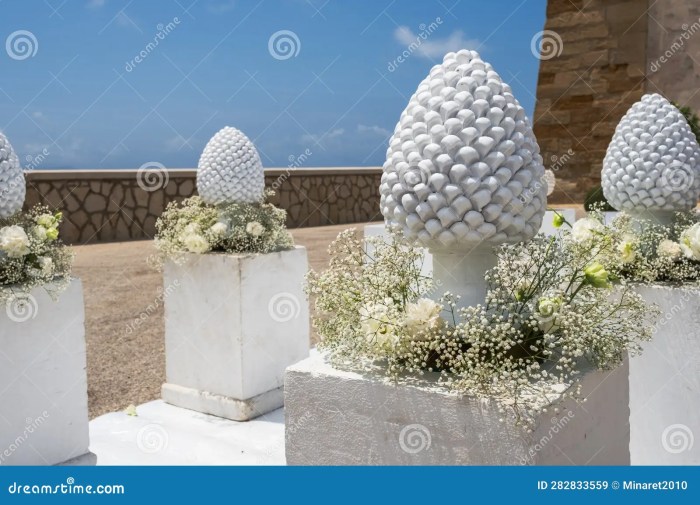
The pine cone symbol continues to hold cultural significance in Sicily today. In contemporary art and design, it has been adapted and reimagined in various ways, reflecting the island’s rich history and vibrant cultural scene.
Contemporary Art
In contemporary art, the pine cone has been used as a motif in sculptures, paintings, and installations. Artists such as Mimmo Paladino and Ignazio Mortellaro have incorporated the symbol into their works, drawing inspiration from its historical and cultural associations.
For instance, Paladino’s “Pine Cone” sculpture (2003) is a monumental bronze piece that evokes the ancient tradition of pine cone offerings.
Design and Popular Culture
The pine cone has also found its way into design and popular culture. It has been used as a decorative element in fashion, jewelry, and home décor. The symbol’s association with fertility and abundance has made it a popular choice for wedding decorations and other celebratory occasions.Furthermore,
the pine cone has been featured in popular culture, such as in the television series “Game of Thrones.” The sigil of House Martell, a noble family from the fictional kingdom of Dorne, incorporates a golden pine cone on a red background, representing the family’s ties to the sun and the land.
Questions and Answers
What is the historical significance of the pine cone in Sicily?
The pine cone has been revered in Sicily since ancient times, representing fertility, prosperity, and divine protection.
How has the pine cone been used in Sicilian art and architecture?
The pine cone has been incorporated into countless Sicilian artworks, from sculptures and paintings to architectural embellishments, often symbolizing strength, longevity, and spiritual enlightenment.
What are some of the religious connections associated with the pine cone in Sicily?
The pine cone has been linked to various religious beliefs in Sicily, including the cults of Demeter and Dionysus, and has been seen as a symbol of both fertility and immortality.
